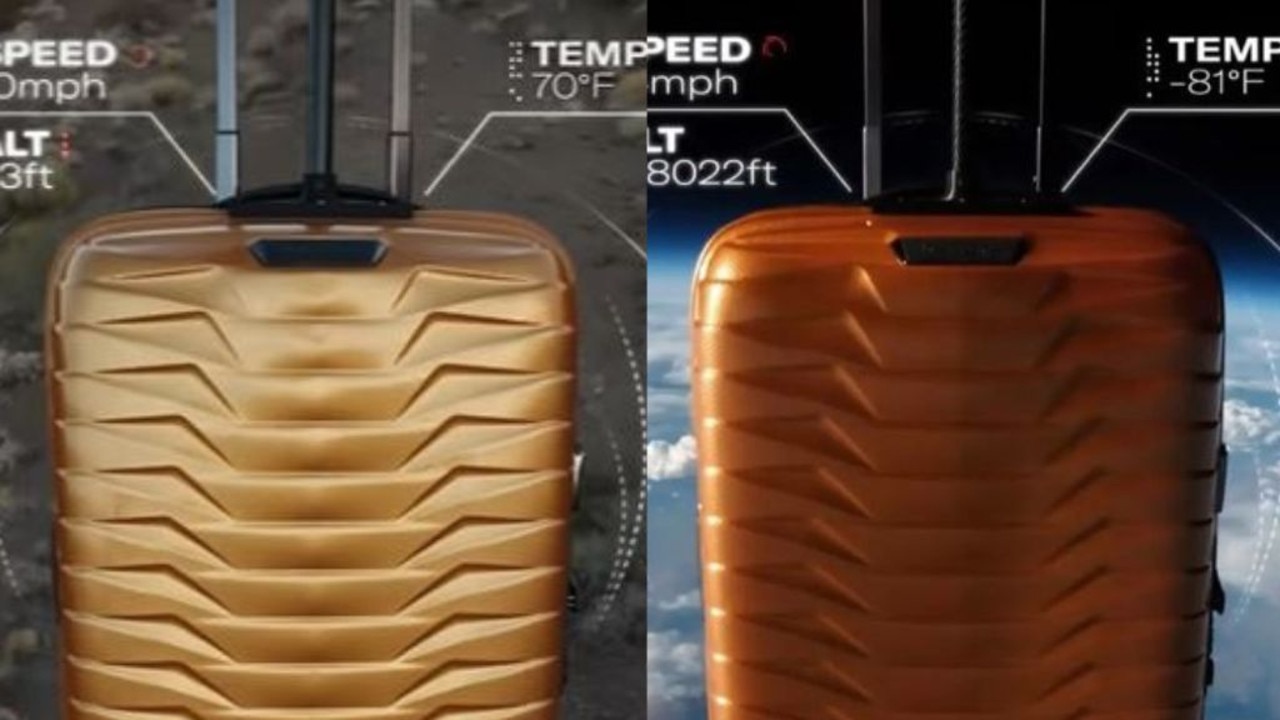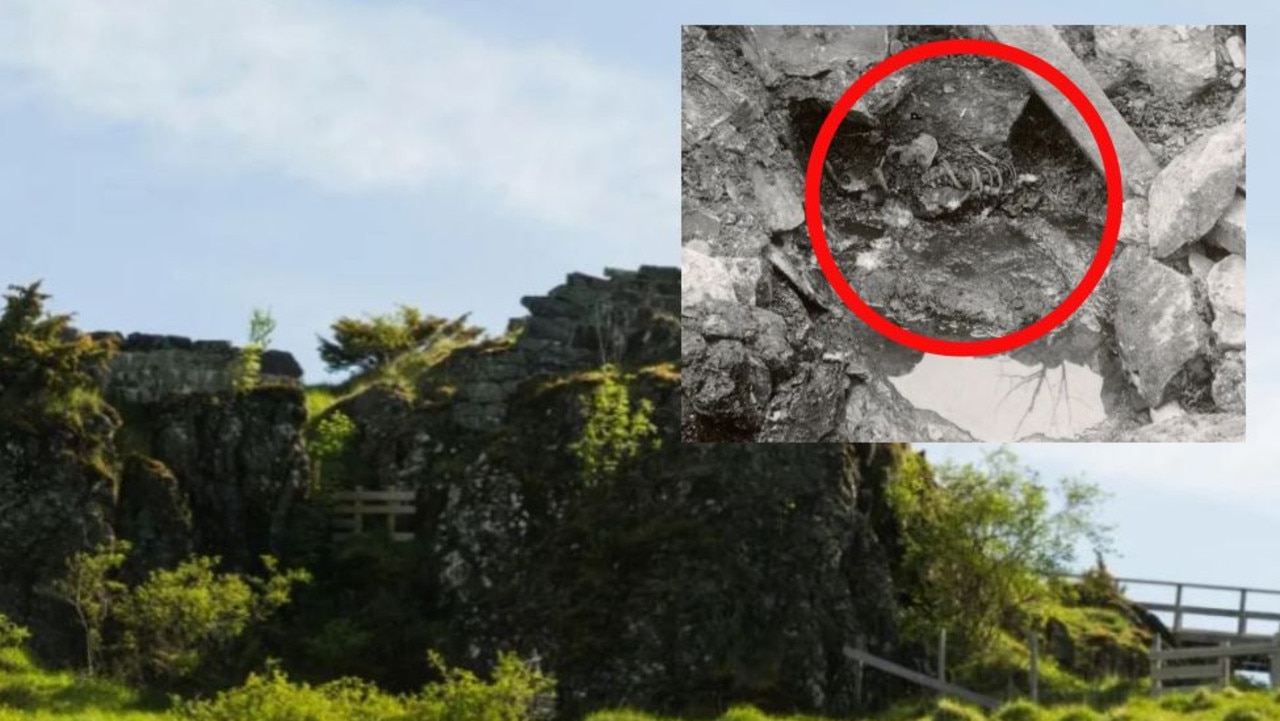Secret Italian getaway every Aussie tourist needs to know about
It’s a destination Aussies travel to in droves, but there’s an island in the country that you’ve probably never heard of — and it will blow your mind.
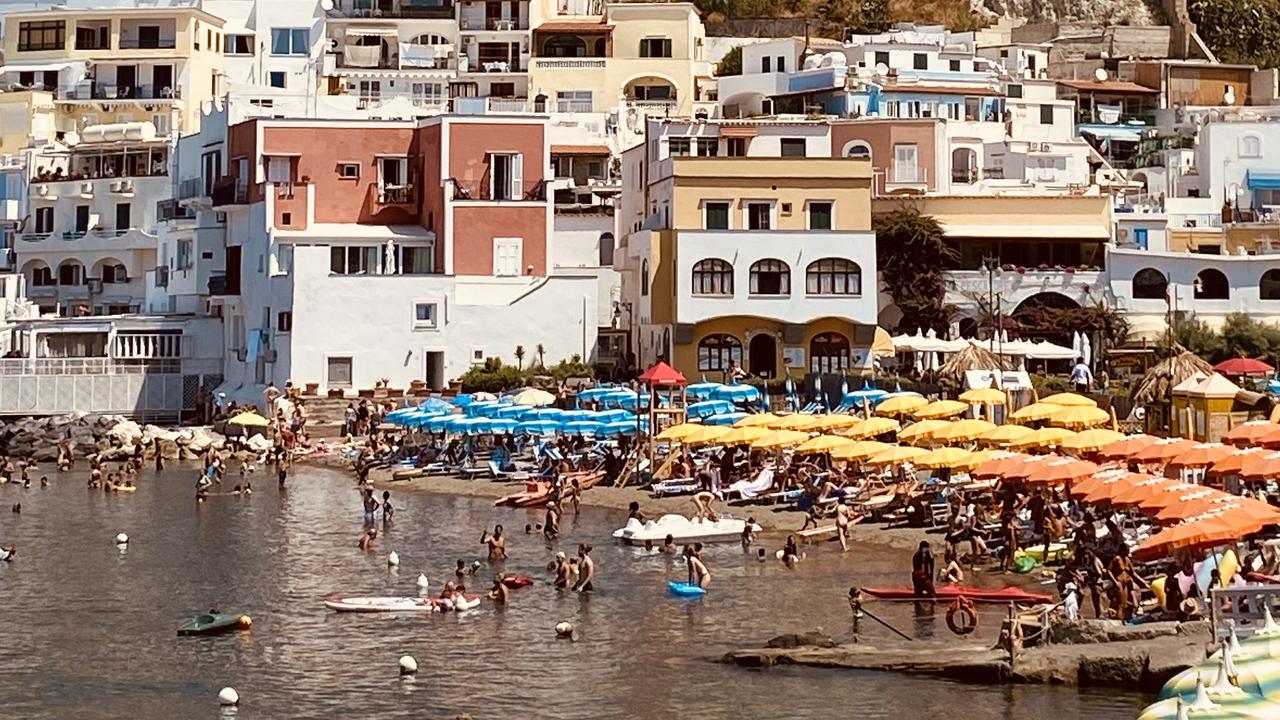
I never expected to be quite literally dipping my toes into my travels through Italy but here we are.
The sun is setting over the Mediterranean, and I’m sitting on the edge of a small wooden pier, dangling my feet over the edge, with a small group of others already in the water.
Waiters are serving drinks and bar snacks in orange lifebuoys, which have been converted into floating bar tables, and it’s clear that no one here is in a rush.
That’s because the water is naturally heated to around 37 degrees, and unsurprisingly we’re all a little zenned out.
Some pockets of the water are boiling hot. Others? not so much, and so in my very own Goldilocks moment, I’m testing the temperature with my toes to find the spot that’s just right.
It’s not long until I’ve found it and made my way into the water. As I pop the lid of my beer, and say “salute” to my new friends, I soak up to my neck in the Sorgeto hot springs.
It doesn’t get much better than this.
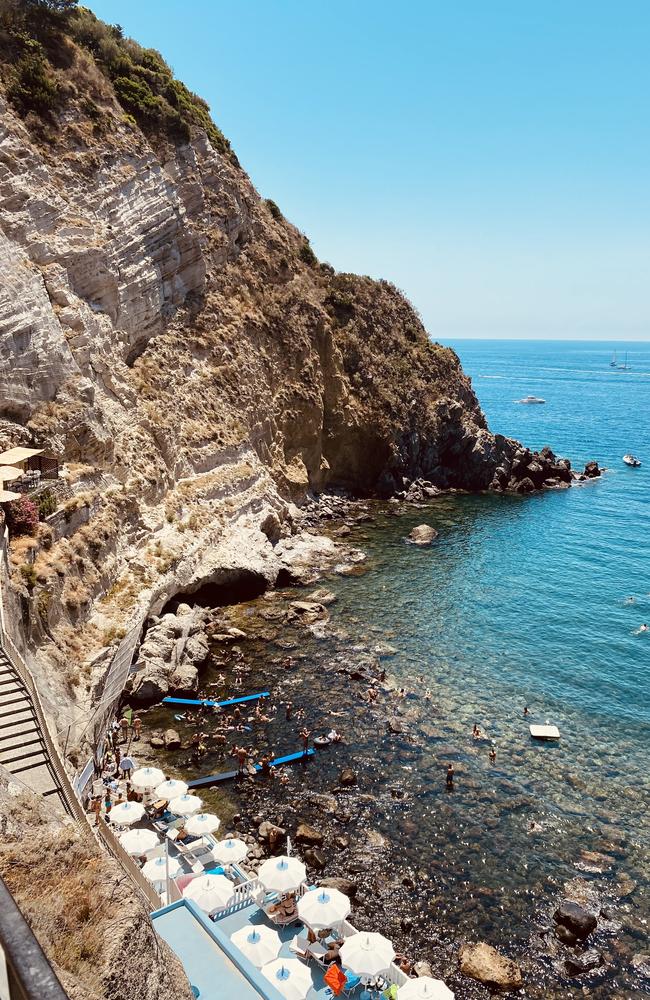
They’re one of the many surprises on Ischia, a volcanic island in the Mediterranean that most people bypass – thankfully I’m one of the lucky Aussies to uncover this hidden gem and experience all that it has to offer.
Calling it Italy’s best kept secret is a bold claim but a worthy one – it’s the lesser known cousin to Capri that, along with Procida, form a trio of islands known as the Phlegraeans.
Ischia stole the spotlight in 2022 when it was named ‘Best Island in the World’ by Travel + Leisure.
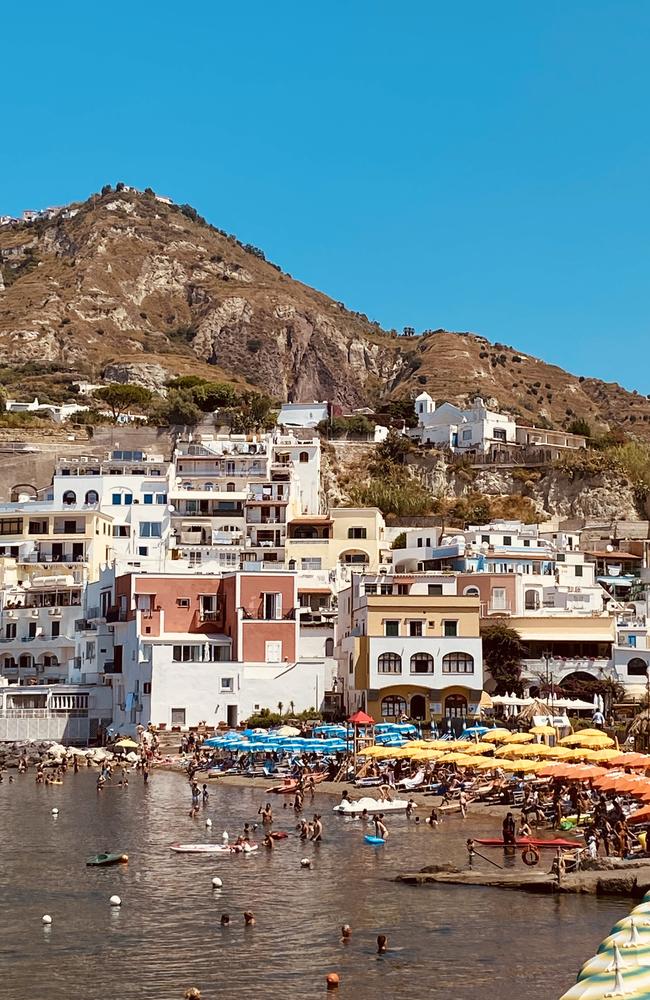
I wasn’t completely sure what to expect but was instantly won over by its blend of fresh food, natural beauty, tranquillity, and rejuvenation.
It’s also extremely affordable, very no-frills, and not as busy as other hotspots along the Amalfi coast during this time of year.
Home to around 20,000 people, the island dates back to 700BC when it was first discovered by the Greeks, then exchanging hands with the Romans, the Byzantines and the Neopolitans.
Now, it’s largely home to local families, retirees, Italians on the mainland who own a weekender there, and travellers like me.
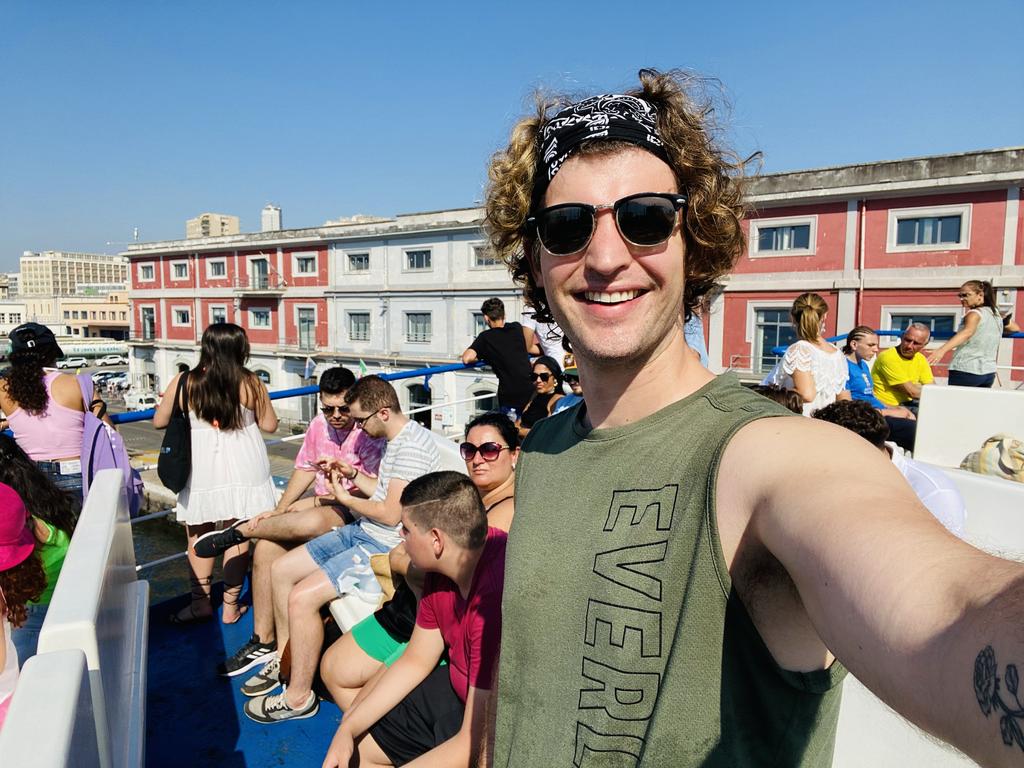
You’ll easily fill three nights here, longer if you’re happy lazing on one of its many beaches, or by the pool in the many holiday resorts.
Getting to Ischia is pretty straight forward, with daily ferries departing from Naples and other neighbouring port cities like Sorrento.
As with most of my experiences in Italy, expect some delays, and some level of chaos amid the language barriers if you don’t speak anything else other than English.
The journey across the Gulf of Naples, around 30 kilometres or so, is around an hour in length and very picturesque, even better if you can catch your ride on a sunny day.
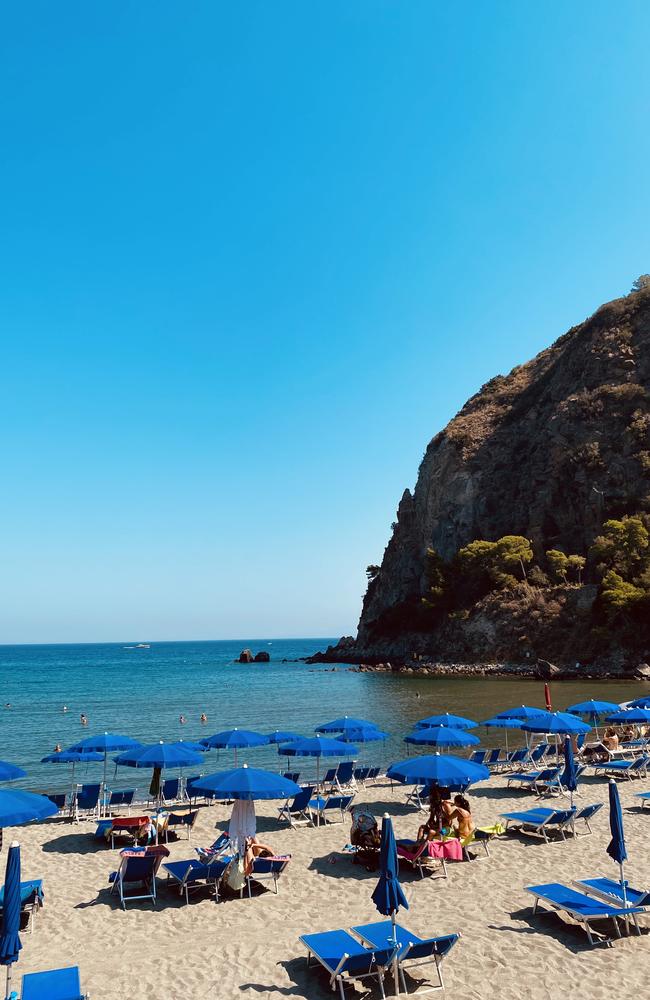
Once you’re off the ferry, Ischia has all the usual travel options from rental cars, taxis and of course scooters if you really want to do the Italian summer authentically.
There’s also a shuttle bus which circles the island in one massive loop.
I opted for simple studio accommodation in the island’s south west, a quieter neighbourhood town of Panza, which is also full of local restaurants, a few dotted bars, and well away from the busier tourist precincts of the main port, Sant D’Angelo, and the area around the Castello Aragonese d’Ischia.
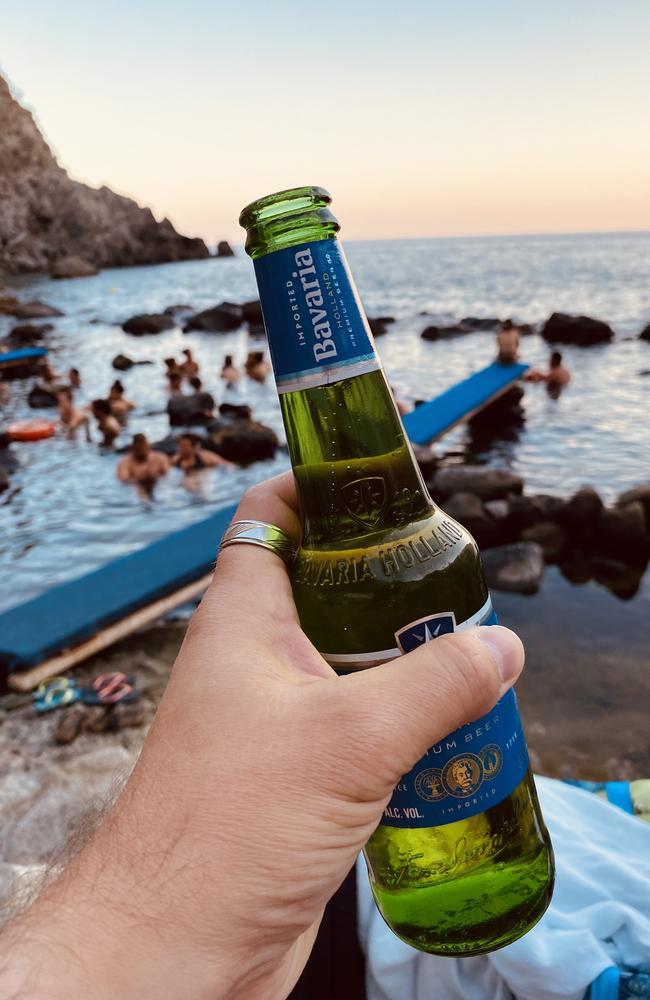
I’d barely set down my bags when Kiko, my Airbnb host, insisted I catch a ride on his Vespa down to the Sorgeto hot springs.
“You don’t understand, you have to see it, let me take you there”, he explained, handing me a helmet and zipping us through the narrow roads and laneways to our destination.
Tucked away in a small inlet with a rocky pebble beach, Sorgeto is a free and well-kept local secret, the thermal springs are surrounded by steep cliff faces and renowned for their extraordinary therapeutic qualities.
You reach the shoreline via 300 steep steps, it’s about a 15 minute walk but the effort is worth it.
Once there, the La Sorgente bar and ristorante on the beach serves drinks and bar snacks until late into the evening.
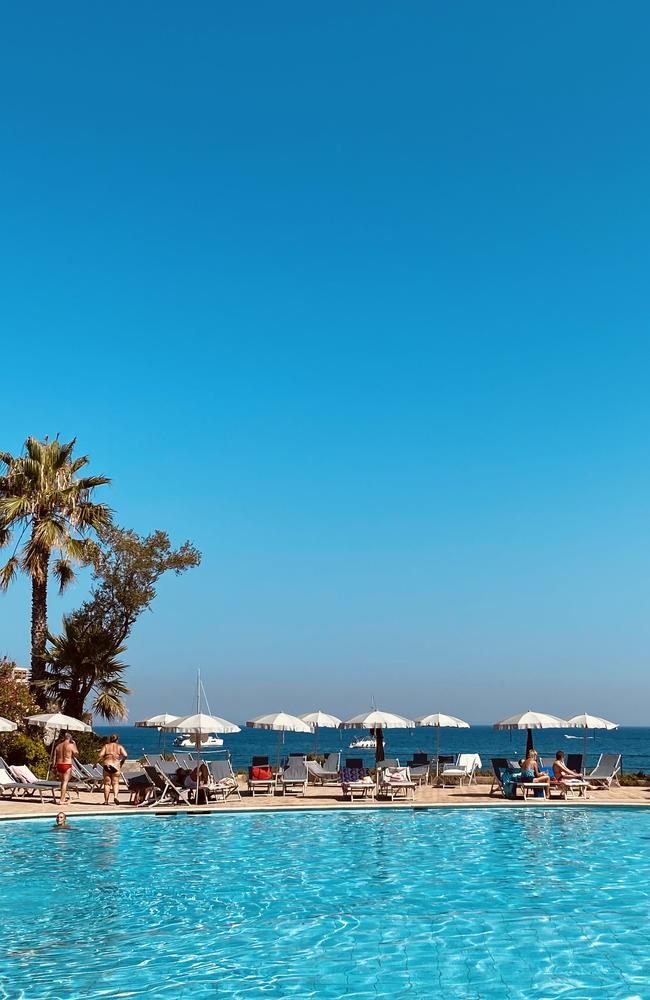
You can also pay for the pampering at one of Ischia’s many wellness retreats and resorts, and there’s lots to choose from.
The Negombo complex was a big stand out for its massage treatments, a private beach, thermal waters at different temperatures, waterfalls, volcanic caves, and a range of amenities to ensure a truly unforgettable experience.
Entry for the day will set you back 45 euros $A73), there are some pretty unusual rules in place about using the umbrellas and deck chair, but I just rolled with it.
As for the massages, a 60 minute treatment start at around 60 euros ($A100) and the quality was good.
All this relaxing works up an appetite. In the small neighbourhood of Forio, I found myself a table on the rooftop of Ristorante Cenerentola, a family run trattoria overlooking a local mountain range.
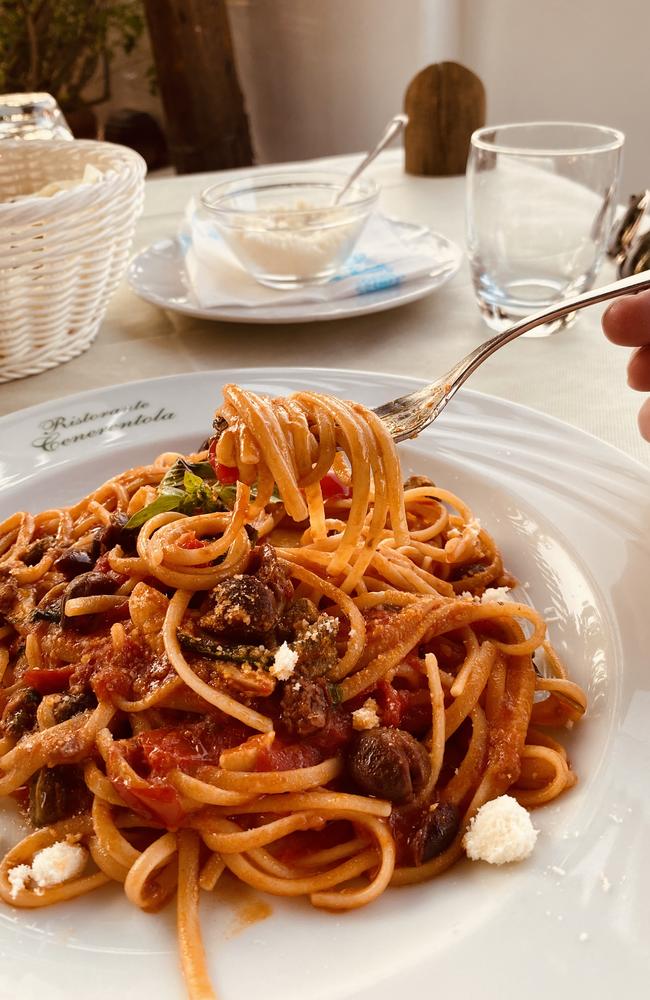
I went for a pasta dish with locally-caught seafood, fresh bread and a cold lager. It was a perfect way to end my first day there.
The next morning, Kiko was keen to extend his hospitality, and invited me out on his boat.
One espresso later and we were back on the Vespa cruising along the cliffside road to the seaside village of Sant’Angelo, where he’d parked his family’s boat in a small marina.
The small hamlet has its own stretch of beaches and bars, and is close to the Le Fumarole beach, where the locals have been known to make the most of the volcanic-heated sand by cooking eggs and fish on the rocks.
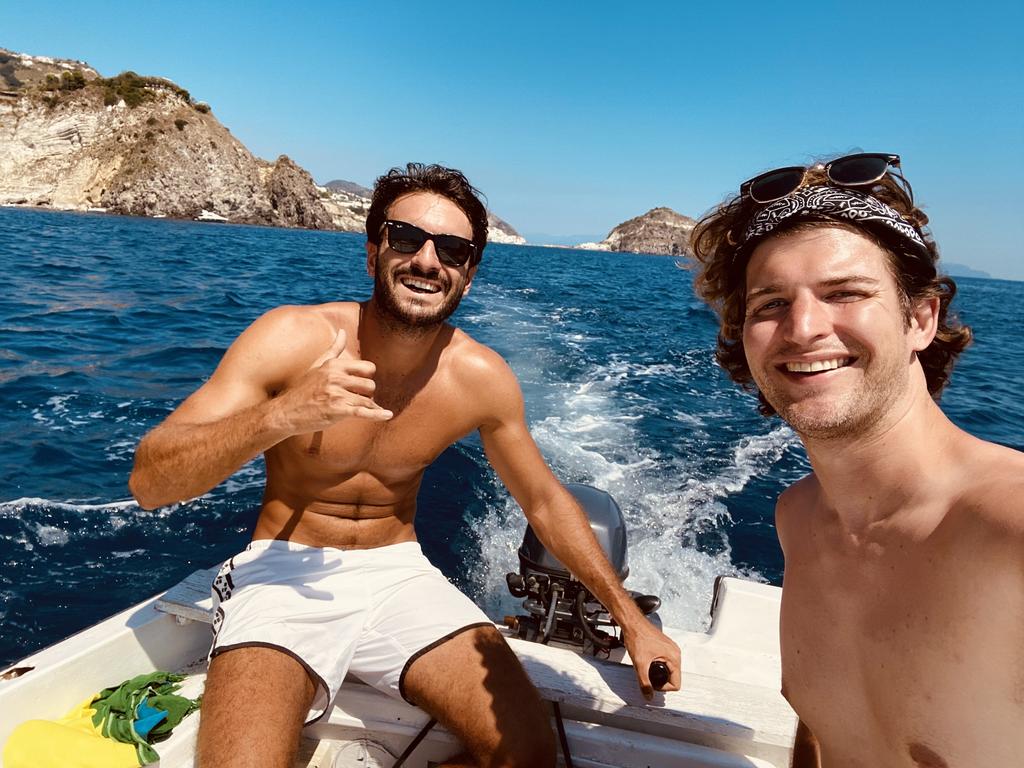
Out on the boat, I noticed there’s something different about the quality of the water in this part of the world.
I’d never seen anything quite in that shade of green or blue, which served as the perfect backdrop for another lazy afternoon in the sunshine.
What also struck me was how quiet the region is – yes, the tourists pockets are there and are buzzing, but there were also many opportunities to completely switch off and zone out.
Once back on dry land, it was the perfect time to explore Castello Aragonese. Dating back to 474 BC under the rule of Hiero I of Syracuse, the fortress had had many inceptions over its time, housing political prisoners, royal weddings, and film crews.
Remember the 1999 thriller The Talented Mr Ripley?
One of the pivotal opening sequences in the film, where Matt Damon’s character first crosses paths Gyneth Paltrow’s Marge and Jude Law’s Dickie, was filmed at the island’s medieval Aragonese castle, about an hour’s walk from the main port.
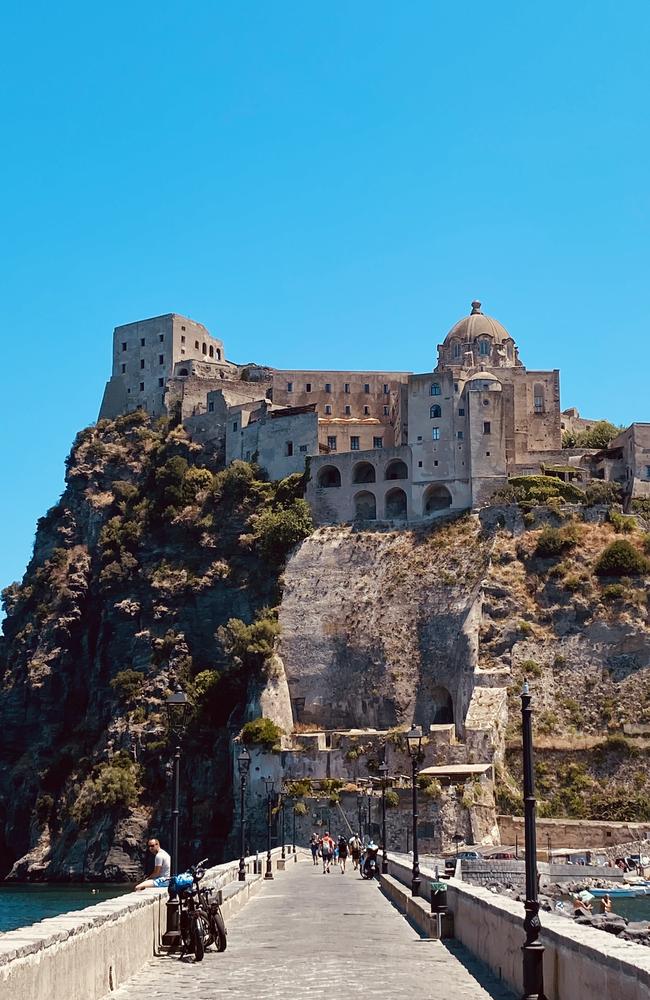
It’s worth spending an entire afternoon here, once you scale all the steps to the breathtaking lookout, you can visit all the different exhibits (including gardens, chapel and torture chamber), and stop off for an Aperol Sprtiz overlooking the island.
More Coverage
Ending the day with more local food was a must, so on a recommendation from Kiko I booked in at Ristorante Il Ritrovo, another local family-run restaurant, and ate like an Italian Emperor with my stomach full of fresh fettuccine, wine, tiramisu, and in a full circle moment (at least for this particular day), an espresso.
Good things can’t last forever and it was eventually time to continue on with my travels, but as I bid “arrivederci” to Ischia, I knew deep down that one day soon I’ll be back.
Troy Nankervis is a freelance journalist and TV producer. You can follow him on Instagram.



